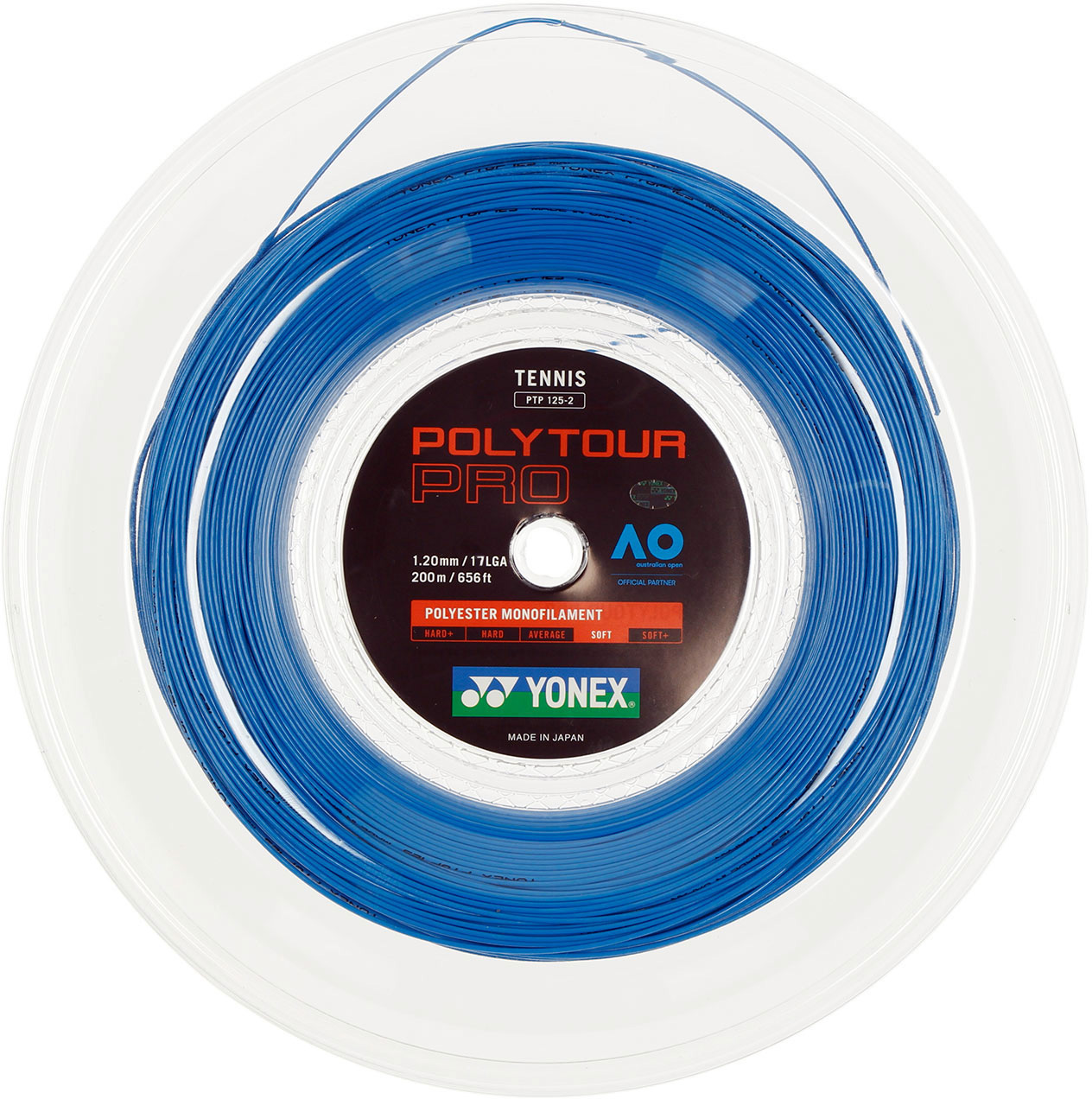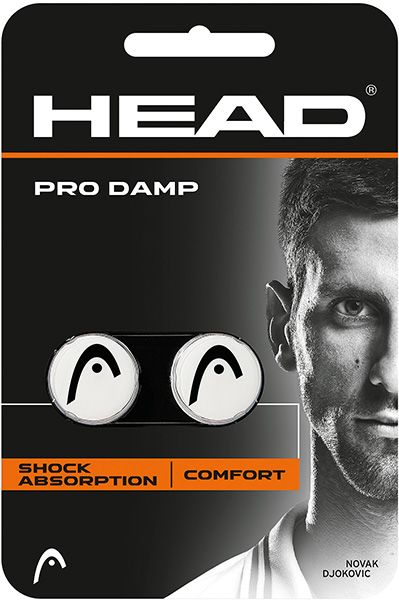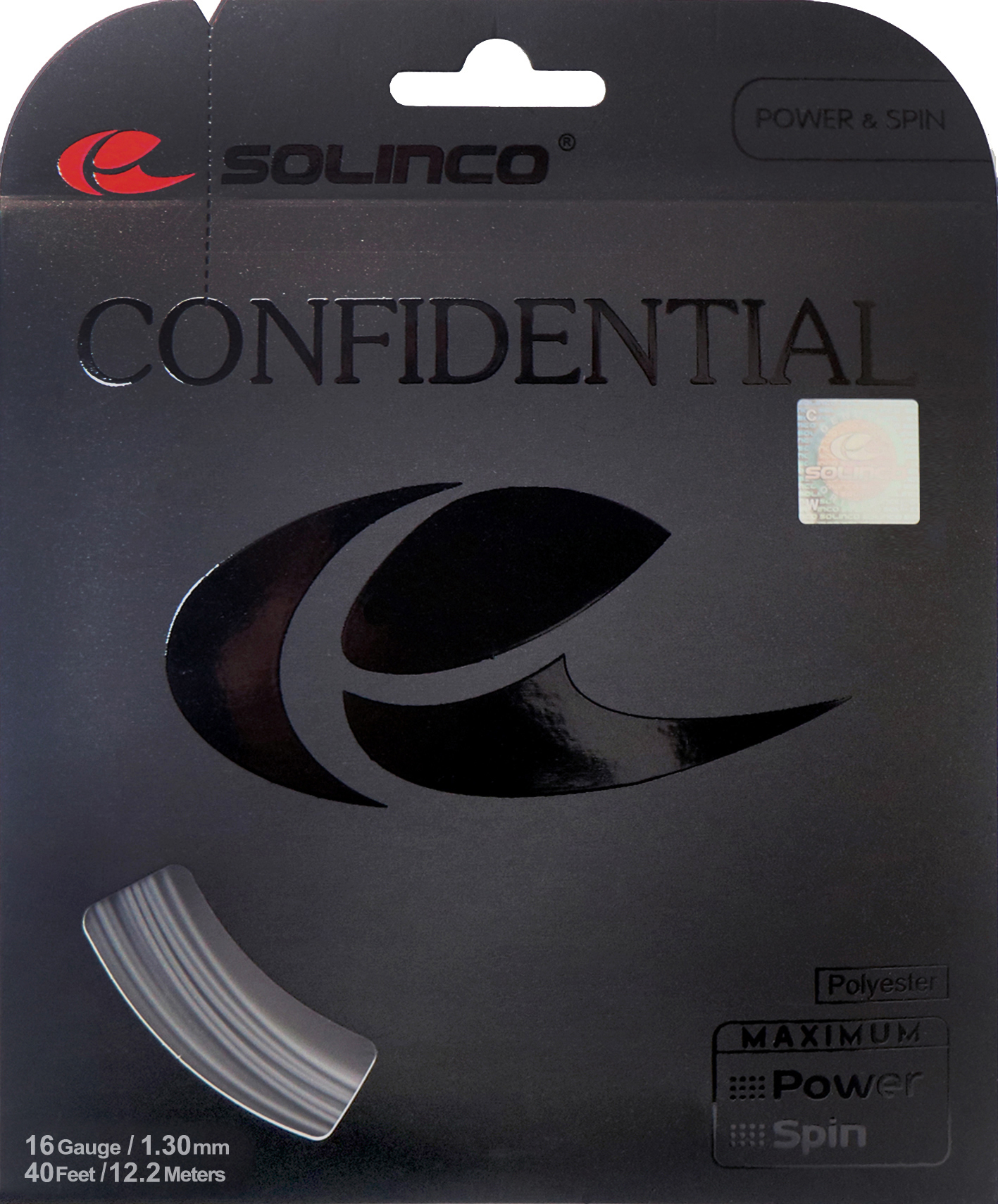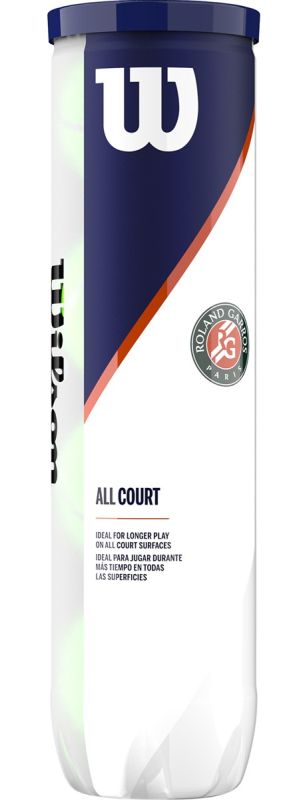134,40 €
Save 8%Each offer available in the Tennis Zone is an original product, coming directly from manufacturers or trusted distributors.

134,40 €
Save 8%
134,40 €
Unleash a match-winning performance with the Yonex Poly Tour Pro Tennis String, a preferred choice of renowned tennis professional Maria Kirilenko and countless other top-ranking players across the globe.
Yonex Poly Tour Pro 130 is a robust polyester string that stands the test of time. Crafted for committed players, this string is not only about endurance but also synonym with exceptional performance.
Featuring monofilament structure for excellent feel and control, this co-polyester-made string significantly minimizes the risk of wrist, elbow, and shoulder injuries, ensuring maximum comfort so you can stay on top of your game.
The string is available in a range of dimensions - 1.15mm, 1.20mm, 1.25mm, and 1.30mm. Choose the size that fits your playing style for the best results.
The primary color of this string is a vibrant blue that stands out on the court. Let your sporting gear reflect your energy and passion for the game.

| Article number: | ST69179.2 |
|---|---|
| Color: | Blue |
| Material: | co-polyester |
| Properties: | comfort control dynamic feel |
| String length (m): | 200 |
| String profile: | soft |
| Structure: | monofilament |
Unleash a match-winning performance with the Yonex Poly Tour Pro Tennis String, a preferred choice of renowned tennis professional Maria Kirilenko and countless other top-ranking players across the globe.
Yonex Poly Tour Pro 130 is a robust polyester string that stands the test of time. Crafted for committed players, this string is not only about endurance but also synonym with exceptional performance.
Featuring monofilament structure for excellent feel and control, this co-polyester-made string significantly minimizes the risk of wrist, elbow, and shoulder injuries, ensuring maximum comfort so you can stay on top of your game.
The string is available in a range of dimensions - 1.15mm, 1.20mm, 1.25mm, and 1.30mm. Choose the size that fits your playing style for the best results.
The primary color of this string is a vibrant blue that stands out on the court. Let your sporting gear reflect your energy and passion for the game.

| Article number: | ST69179.2 |
|---|---|
| Color: | Blue |
| Material: | co-polyester |
| Properties: | comfort control dynamic feel |
| String length (m): | 200 |
| String profile: | soft |
| Structure: | monofilament |
Each offer available in the Tennis Zone is an original product, coming directly from manufacturers or trusted distributors.
Sign up for the free newsletter and do not miss any promotions and news, as well as individual offers from our store.
Functional cookies are absolutely necessary for the functionality of the web shop. These cookies assign a unique random ID to your browser so that your unhindered shopping experience can be guaranteed over several page views.
Marketing cookies are used to display advertisements on the website in a targeted and individualized manner across multiple page views and browser sessions.
Tracking cookies help the shop operator to collect and evaluate information about the behaviour of users on their website.
These cookies are used to collect and process information about the use of the website by users, in order to subsequently personalise advertising and/or content in other contexts.
Service cookies are used to provide the user with additional offers (e.g. live chats) on the website. Information obtained via these service cookies may also be processed for site analysis.




